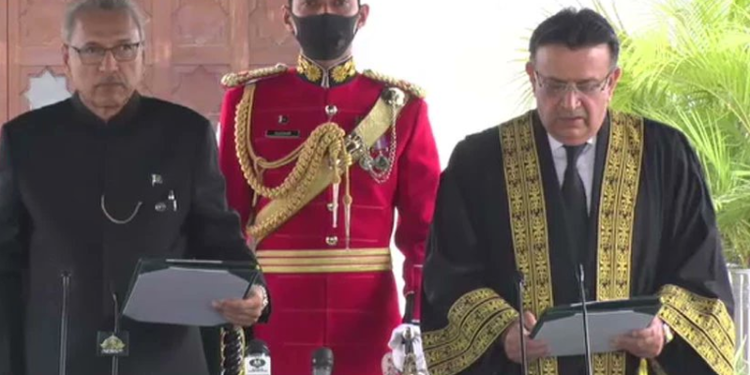On Wednesday, Justice Umar Ata Bandial was sworn in as the 28th Chief Justice of Pakistan during a ceremony held at Aiwan-i-Sadr in Islamabad. He will be the country’s 28th Chief Justice.
President Arif Alvi swore him in and gave the oath of office to him. Prime Minister Imran Khan, Chief of Army Staff Gen Qamar Javed Bajwa, Speaker of the National Assembly Asad Qaiser, Senate Chairman Sadiq Sanjrani, Foreign Minister Shah Mehmood Qureshi, Information Minister Fawad Chaudhry, Supreme Court judges, senior lawyers, and various ministers were all in attendance, as were Supreme Court judges, senior lawyers, and various ministers.
In his current position, Justice Bandial will remain in the top judicial office until September 16, 2023. He has previously held the position of chief justice of the Lahore High Court in Pakistan.
According to the seniority system, Justice Qazi Faez Isa will succeed Justice Bandial as Chief Justice of Pakistan in September 2023 and will serve until October 25, 2024. After then, he will be succeeded for a period of 282 days by Justice Ijaz-ul-Ahsan. The position will then be filled by Justice Syed Mansoor Ali Shah on August 4, 2025.
In the foreseeable future, Justice Shah will serve in his current position until November 27, 2027, when he will be succeeded by Justice Munib Akhtar.
Justice Yahya Afridi will be the country’s next chief justice from December 14, 2028, until January 22, 2030, according to the country’s constitution.
‘Criticate judgments rather than judges,’ says the author.
A day earlier, Justice Bandial delivered a speech at a full-court reference in honour of outgoing Chief Justice Gulzar Ahmed, during which he laid out his vision for how the supreme court will operate during his tenure.
Justice Bandial also criticised the mainstream media and social media for resorting to attacking judges rather than criticising their decisions, a criticism that Justice Bandial agreed with.
Judge Bandial noted that “the disparities in judges’ judgments on legal issues emerge from our individual perceptions,” and that “this variance adds complexity to our understanding.”



























